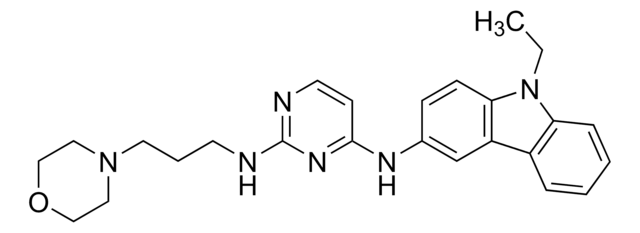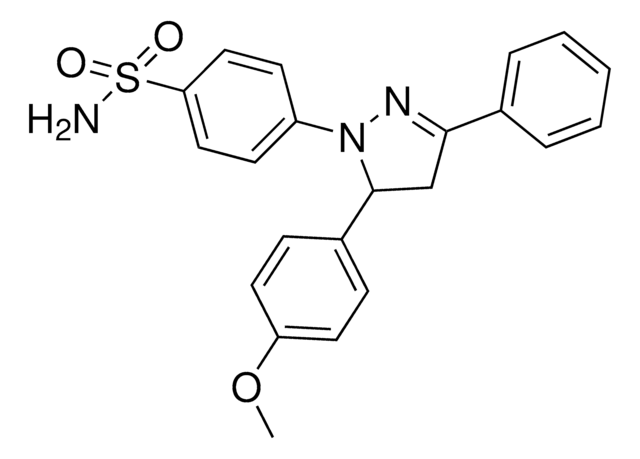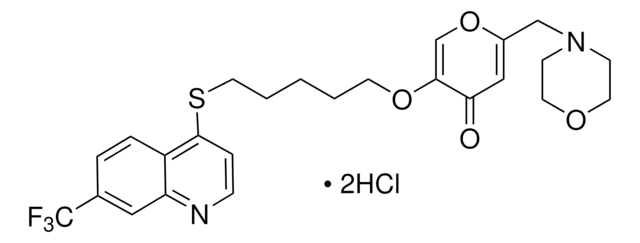SML1253
CASIN
≥98% (HPLC)
Synonym(s):
2-[(2,3,4,9-Tetrahydro-6-phenyl-1H-carbazol-1-yl)amino]ethanol, Cdc42 Activity-Specific Inhibitor
About This Item
Recommended Products
Quality Level
Assay
≥98% (HPLC)
form
powder
color
, white to very dark brown
solubility
DMSO: 20 mg/mL, clear
storage temp.
2-8°C
SMILES string
OCCNC1CCCC2=C1NC3=C2C=C(C4=CC=CC=C4)C=C3
InChI
1S/C20H22N2O/c23-12-11-21-19-8-4-7-16-17-13-15(14-5-2-1-3-6-14)9-10-18(17)22-20(16)19/h1-3,5-6,9-10,13,19,21-23H,4,7-8,11-12H2
InChI key
RXIUMAOXORBRCY-UHFFFAOYSA-N
Application
- to study its effects on the stimulation of extracellular vesicles (EVs) in intestinal epithelial cells
- to study its effects on mice jejunum
- to study its effects on microbial adhesion-triggered endocytosis (MATE) vesicle morphology in segmented filamentous bacteria (SFB)-colonized mice
Biochem/physiol Actions
Storage Class Code
11 - Combustible Solids
WGK
WGK 3
Flash Point(F)
Not applicable
Flash Point(C)
Not applicable
Certificates of Analysis (COA)
Search for Certificates of Analysis (COA) by entering the products Lot/Batch Number. Lot and Batch Numbers can be found on a product’s label following the words ‘Lot’ or ‘Batch’.
Already Own This Product?
Find documentation for the products that you have recently purchased in the Document Library.
Customers Also Viewed
Our team of scientists has experience in all areas of research including Life Science, Material Science, Chemical Synthesis, Chromatography, Analytical and many others.
Contact Technical Service









